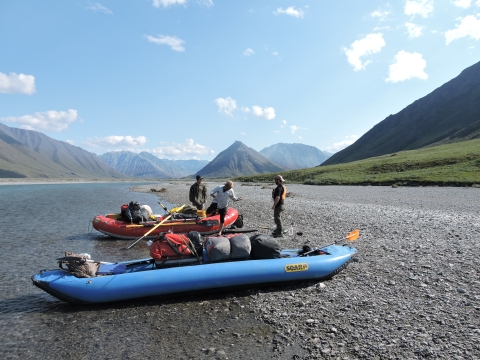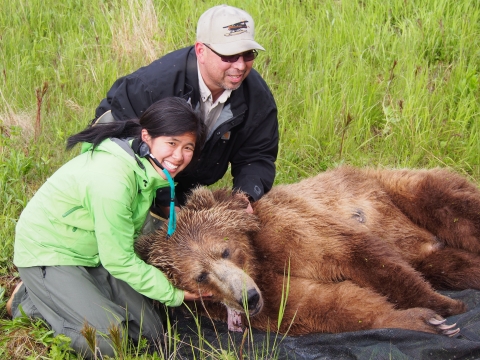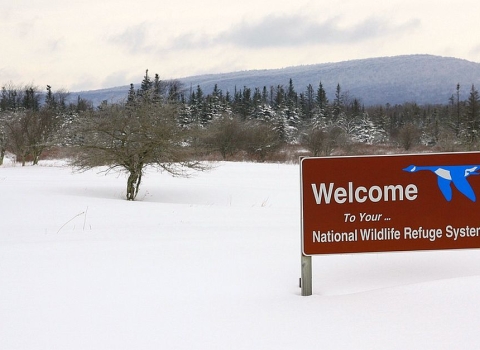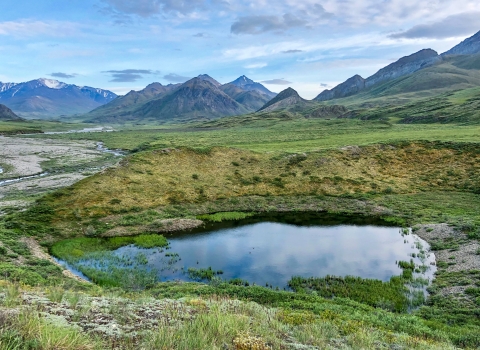You’re young, adventurous and fascinated by nature.
Where does that get you when you want to use a school term or break to explore job paths, gain field experience or add some career traction?
To a national wildlife refuge national wildlife refuge
A national wildlife refuge is typically a contiguous area of land and water managed by the U.S. Fish and Wildlife Service for the conservation and, where appropriate, restoration of fish, wildlife and plant resources and their habitats for the benefit of present and future generations of Americans.
Learn more about national wildlife refuge or other U.S. Fish and Wildlife Service site, if you’re lucky, to learn firsthand about wildlife conservation as a paid intern, a fellow or a volunteer.
Some lucky students get paid for trying their hands at refuge wildlife conservation.
The Student Conservation Association, a nonprofit that recruits and trains future conservation leaders, hosts many paid internships at wildlife refuges — in partnership with the U.S. Fish and Wildlife Service.
As an SCA intern at Aransas National Wildlife Refuge in summer 2016, Taylor Franklin saw a prescribed burn prescribed burn
A prescribed burn is the controlled use of fire to restore wildlife habitat, reduce wildfire risk, or achieve other habitat management goals. We have been using prescribed burn techniques to improve species habitat since the 1930s.
Learn more about prescribed burn , treated an invasive marsh plant called phragmites, plotted GPS points and weeded a pollinator garden. She hopes to earn a master’s degree in natural resource and wildlife conservation.
“This internship may have changed my life in that it began my path to a career in conservation,” she says.
SCA interns typically receive a biweekly stipend plus a housing and travel allowance, and are eligible for AmeriCorps Education awards. SCA internships are for high school and college students as well as gap-year students.
Some refuges recruit their own interns, with funding from nonprofit Friends groups or educational institutions. Interested students should apply directly to the refuge.
Refuge internships are usually unpaid, but housing and a food stipend are often included. Refuges that in recent years have hosted their own internship programs include Alligator River, Chincoteague, J.N. “Ding” Darling, Rachel Carson, Seney and Neal Smith Refuges.
With help from Friends groups, many refuges also recruit students as volunteers. Student volunteers perform such tasks as leading refuge tours, photographing natural resources, conducting wildlife surveys and helping with administrative duties.
In between tagging monarchs and testing them for parasites at Sacramento National Wildlife Refuge, 2016-17 intern Haley Henderson says she and a fellow intern “would visit schools in northern California to share our newfound knowledge with kids.”
“I enjoyed educating youth about conservation and the history behind the destruction of California’s natural wetlands,” Henderson says.
Find more information about student volunteer opportunities on wildlife refuges at volunteer.gov.
Some of the more unusual student volunteer opportunities at refuges are for graduate students in biology on Kodiak National Wildlife Refuge in Alaska.
From 2009 to 2015, crews of seasonal biology volunteers helped collar female Kodiak bears for two research studies. Volunteers took hair samples and a small slice of claw for stable isotope analyses and tissue samples for genetic analyses. They also weighed bears (by lifting them with a helicopter) and assessed their reproductive status.
“I’ve had absolutely great volunteers, interns, biotechs and grad students over the past 10 years,” says refuge wildlife biologist Bill Leacock. “We wouldn’t have been able to get our work done without them.”
The Hispanic Access Foundation offers paid internships for college students and college grads. Some 2017-18 HAF interns found placements in the National Wildlife Refuge System.
“The best part of my fellowship is using storytelling as a tool for conservation,” says Ashley Suarez-Burgos, who spent her internship as a digital media ranger at Refuge System headquarters in Virginia. “This might mean something as small as documenting a fishing event at Patuxent Research Refuge or as big as helping create a nationwide campaign. I love any chance I can get to expand creative boundaries through art and film.”
Ashleyann Perez-Rivera, a former HAF intern with theUrban Wildlife Conservation Program before she joined the full-time staff, got a kick out of talking about wildlife with schoolkids in Falls Church, Virginia.
“It always inspires me how excited they are to learn about conservation and how curious they are about all the native species nearby,” she says. “My favorite part was seeing their eyes glow when they learned about wolves — and later hearing from teachers that the students took books out of the library to learn more.”
She also liked sharing a new outdoor experience with kids in Philadelphia: “At John Heinz Refuge, I was able to learn archery for the first time and then teach others what I learned.”
The Career Discovery Internship Program, begun in 2008, aims to draw diverse and historically underrepresented students into conservation careers. The program is a collaborative, award-winning effort between the U.S. Fish and Wildlife Service and the Student Conservation Association.
Quanit Ali, then a junior at the University of Texas-Austin, was part of the 2017 CDIP cohort.
As a wildlife management intern at Glacial Ridge and Rydell National Wildlife Refuges, he says, “I did a variety of things from vegetation monitoring, studying the hydrology functions of lakes on the refuge, bird banding … You could see where the data you gathered got put to use and affected management actions. I found it really meaningful.”
He began the internship as an economics major, who was considering a move into wildlife biology. “The internship convinced me — based on the things I did, the exposure I got [to conservation] — that I was on the right path. I got to see the whole picture.”
National Wildlife Refuge System Wilderness Fellows, hired through the American Conservation Experience, inventory key features and vulnerabilities of selected wilderness areas on refuges.
Alicia Thomas spent 10 weeks in 2017-18 working at Pahranagat National Wildlife Refuge in Nevada, then 10 more weeks at Little Pend Oreille National Wildlife Refuge in Washington state.
“I found Pahranagat Refuge to be especially interesting for studying wilderness due to its incredible mosaic of lakes, wetlands, meadows and desert uplands within a relatively compact area,” she says.
“It’s been really great,” says Keith Adams of his experience monitoring wilderness character at Bogue Chitto and Wichita Mountains National Wildlife Refuges.
“I never imagined I’d be working in swamps while riding airboats, or marking timber in dense hardwood forests. More recently, I’ve worked cattle and bison for auction in Oklahoma and taught community members about wilderness and its value to our lives. I’ve gotten to experience so many things that pertain to conservation and management, the career path I’d like to follow.”
To learn more about U.S. Fish and Wildlife Service internship and career opportunities, see USAJOBS.gov. See also fws.gov/careers.












